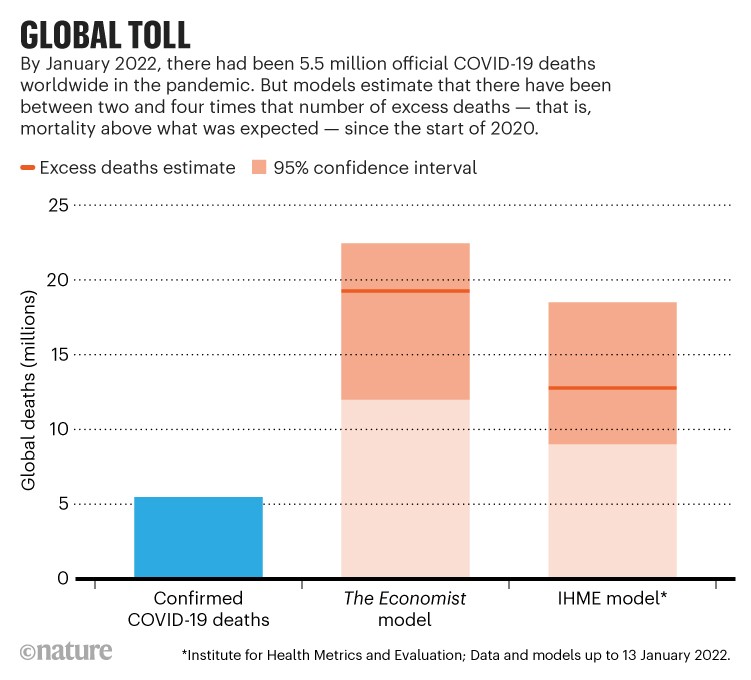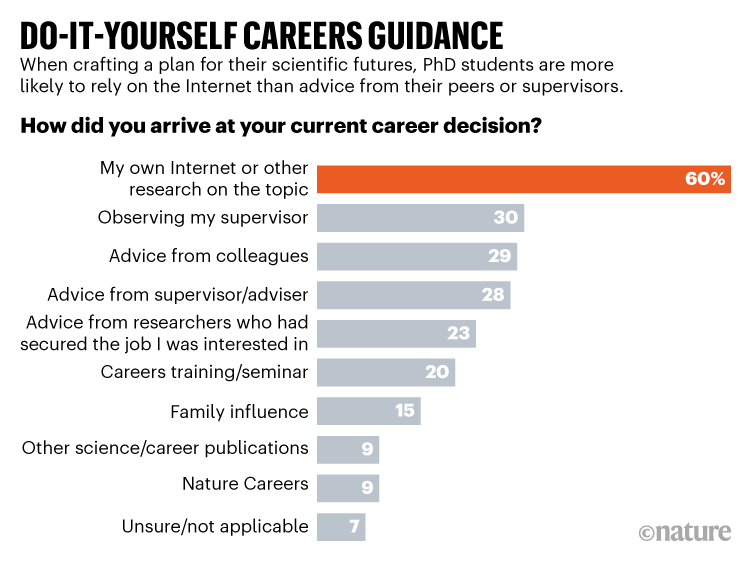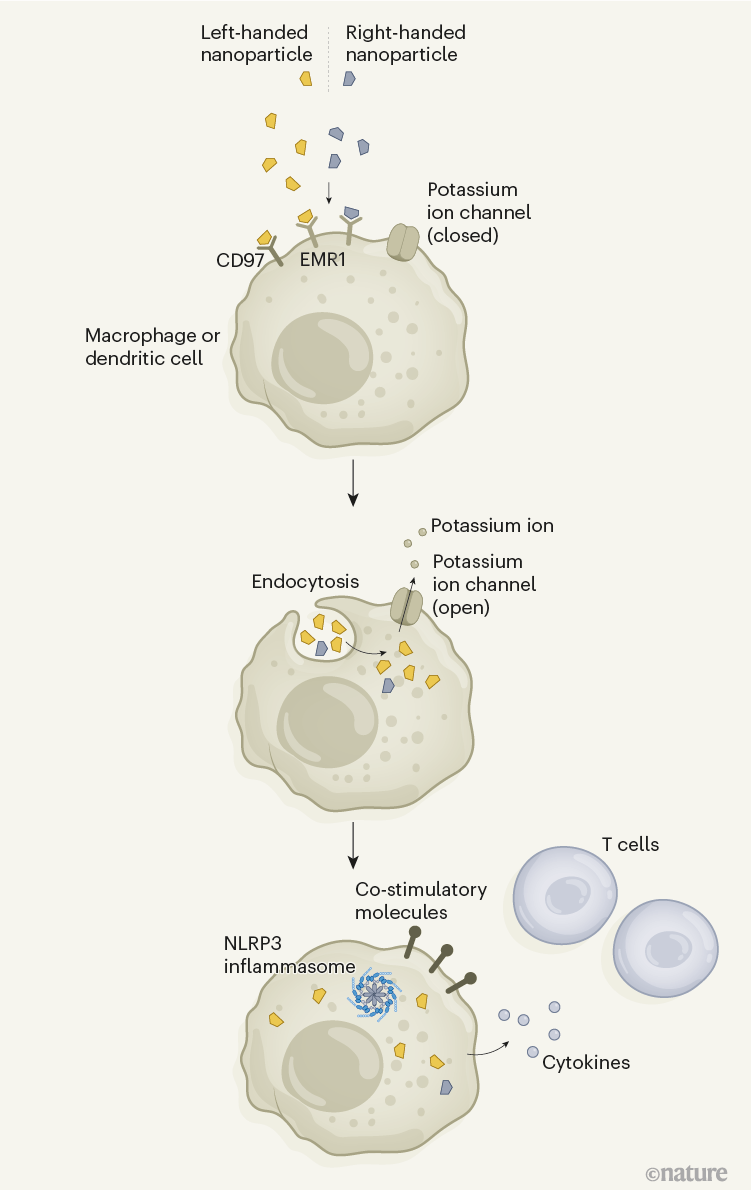The pandemic’s terrible toll
The pandemic has taken a grim toll on society, but working out exactly how many people have died is very complex. Records of excess mortality — a metric that involves comparing all deaths recorded with the number expected to occur — are not always reliable or complete. The Economist magazine has used a machine-learning approach to produce an estimate of between 12 million and 22 million excess deaths — or between two and four times the pandemic’s official toll so far. Our feature on the pandemic’s toll contains plenty more charts to dig into.
Internet, what should I do after my PhD?
PhD students trying to work out their next career step are more likely to turn to the Internet and independent research than rely on advice from supervisors or other researchers, as these survey results show. Our careers story contains tips for lab leaders who want to offer better advice to junior colleagues — particularly about pursuing non-academic careers. That’s important, because intense competition means that the vast majority of PhD students won’t end up in academic positions.
How asymmetry can shape immunity
A chiral molecule exists in two forms, called enantiomers, that are chemically identical, but are mirror images of each other. Adding to the wondrous complexity of the immune system, a paper in Nature reports that the chirality of tiny nanoparticles can influence the response of the immune system — a finding that might help to inform the design of vaccines.
As this graphic explains, nanoparticles can activate macrophages and dendritic cells (two crucial cell types of the immune system) to boost defensive inflammation or a vaccine response. The authors report that gold nanoparticles with left-handed chirality are more efficient at entering these cells than are their right-handed counterparts. Both types of nanoparticle engage with the receptors CD97 and EMR1 on the cell surface, but left-handed particles do so with higher affinity.
The particles are then transported into the cell through a process known as endocytosis. Once inside the cell, they trigger the opening of potassium ion channels in the cell membrane. This, in turn, activates the NLRP3 inflammasome, a protein complex that senses foreign material. The nanoparticles induce the production of cytokines (proteins that mediate immune-cell growth and activity) and increase the expression of co-stimulatory molecules (which activate a response to foreign bodies), both of which are required to activate immune cells called T cells.










More News
Could bird flu in cows lead to a human outbreak? Slow response worries scientists
US halts funding to controversial virus-hunting group: what researchers think
How high-fat diets feed breast cancer